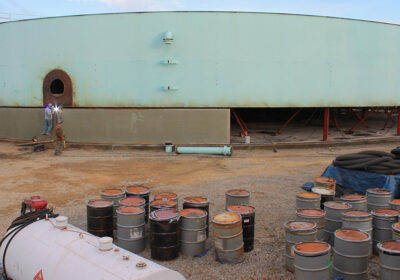API 653 BEST PRACTICES FOR INSULATED STORAGE TANKS
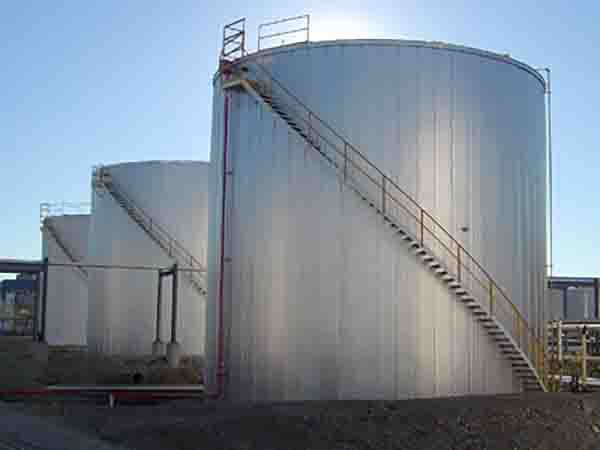
Today we welcome Gary Banks to The Think Tank Blog. Gary is President of Banks Industrial Group, or BIG. BIG specializes in insulation systems for above ground bulk storage tanks, along with pipe insulation, coatings and industrial services. With his experience working with storage terminal operations and tank managers, project managers, engineers and steel tanks in other industrial settings, Gary has seen a lot of tank insulation systems in operation. He’s here with us today to offer some insight into tank insulation and tank inspections.
API 653 Tank Inspections
API 653 standards have been in place since the early 1990’s and stemmed from tank failures that may have contributed to environmental damages. The 653 codes created many challenges for terminal operators striving to keep their storage tanks compliant with today’s standards. The cost for out-of-service tank inspections, including cleaning and loss of utilization, can be astronomical – and that’s before any repair costs are factored into the equation.
Did you know API 653 recommends monthly inspections, in addition to the required 5-year in service external inspection and the 10-year internal inspection? Monthly inspections performed by the site owner/operator must be conducted by a knowledgeable person, however, that person need not be certified. The tank operator should maintain a record of these monthly inspections for review by regulators.
Moisture Under the Insulation – Can API 653 Inspections Catch That?
Inspection of a heated and insulated tank becomes a real challenge because of what may be hidden under the metal jacketing and insulation. Documented cases exist where 5- and 10-year inspections missed significant corrosion under insulation (CUI) problems that later resulted in tank failure. The photo below shows an extreme example of the potential effects of CUI.
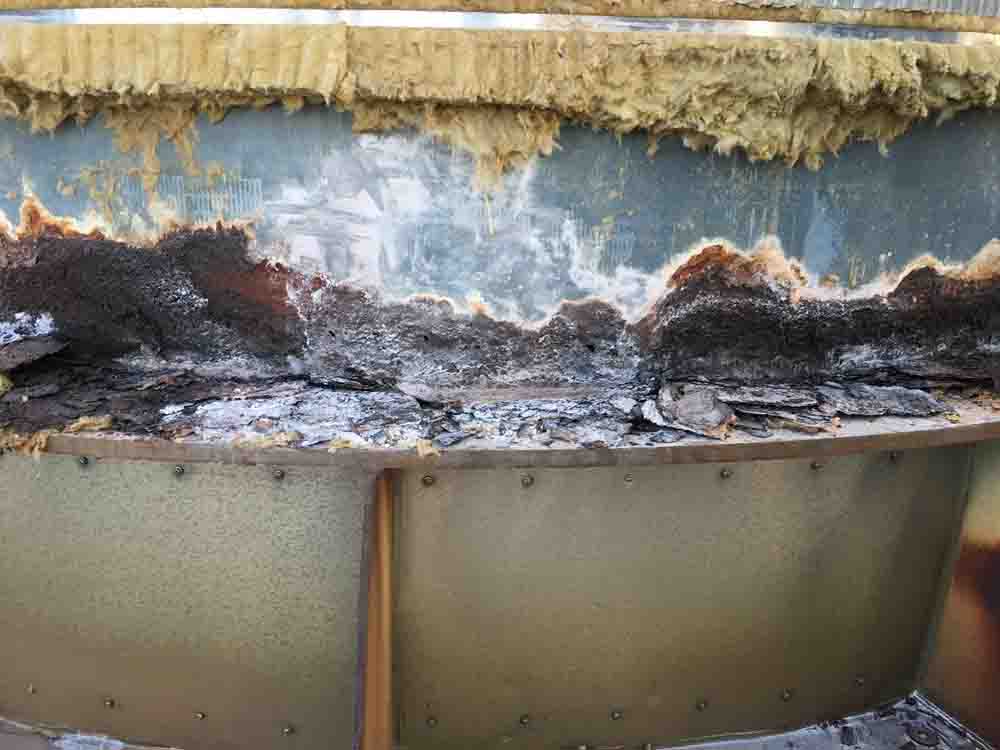
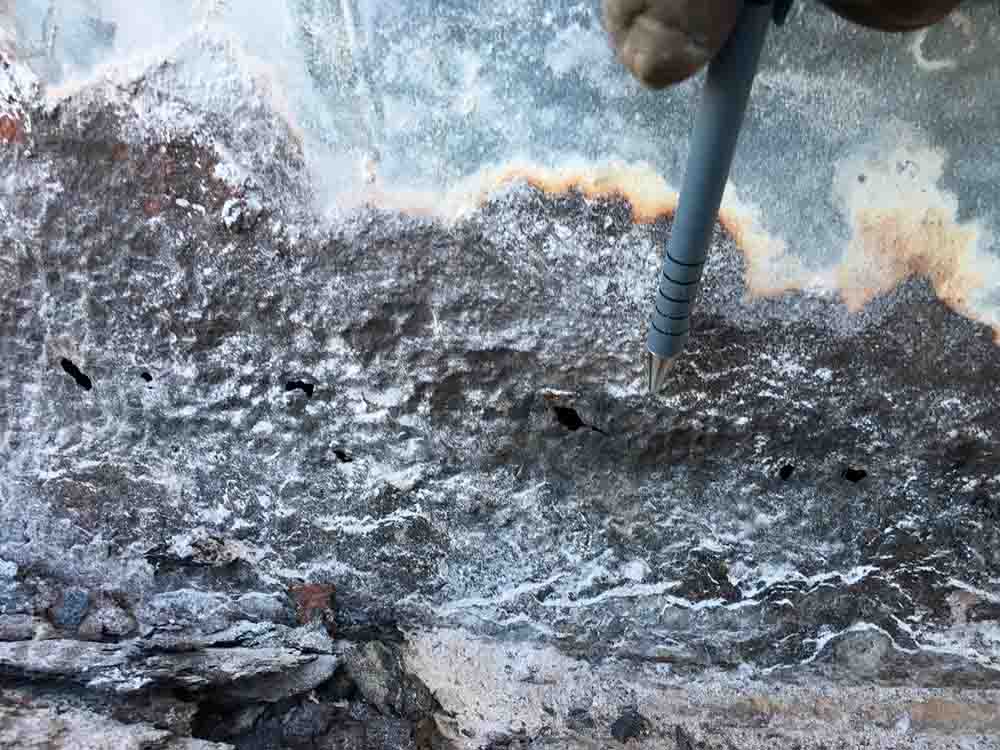
Corrosion Under Insulation – Are There Solutions For Repairing Damage and Preventing Further Corrosion?
In one instance, an owner’s tank started to leak just 3 months after their 10-year out-of-service inspection. The leak occurred in an unseen area behind the horizontal insulation panels. These conditions created a monumental expense because the tank had just returned to service after a cleaning and ten-year inspection. An insulation specialist identified the source of water intrusion that had caused the external tank corrosion and subsequent leak behind the insulation. After discovery of the problem, a long term solution was presented and adopted by the owner. An example of a long term solution to fix the problem using epoxy coatings and wraps is below.
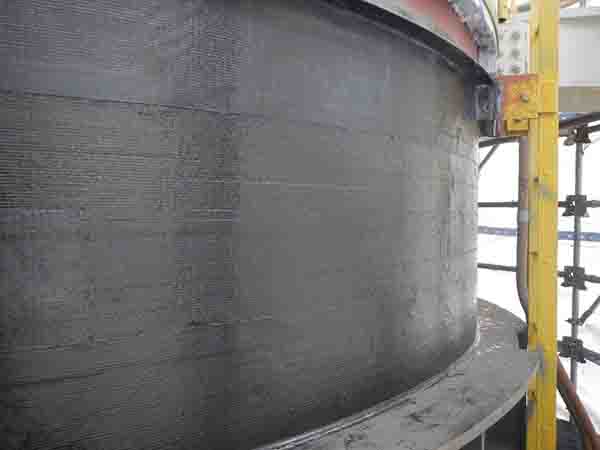
Can You Avoid Hidden Moisture Damage?
Many tank inspectors agree that good practices adhering to API 653 should be adopted into the customer’s insulation program. One such practice is to expose the tank corner weld where the tank shell meets the tank chime or floor. By “raising” the tank insulation, constant visual inspection of an area that inspectors call the most critical weld of the tank’s construction is viable. In addition, this exposed area will allow the owner to observe any moisture that may be seeping from the bottom of the tank insulation. Inspection ports are also available that allow operators easy access to periodically check the condition of vessel walls using an ultrasonic thickness (UT) meter. These ports are easily installed without special tools or hot work permits.
Insulation support systems can provide a solid foundation for the insulation panels to rest on, permitting API 653 inspectors to access critical areas of the tank. Support systems can be adapted to go around the tank’s apertures and will be wide enough to accommodate the existing insulation panels. The solution is provided by a simple weld procedure that attaches angle clips to the tank. Care must be taken because the support system is rigid and will not allow flex or sag. Issues have arisen when this system was installed utilizing flat steel that flexed and crushed the shell jacketing due to the down forces and weight of the insulation. If the tank is in service, a non-welded version of the insulation support system can be installed that enables the tank to stay in service. Installation can be completed with a low risk hot work permit that allows hand or electric tool utilization for cutting the existing shell panels. The support system is then bolted together as it is installed around the tank base. It is fast, simple, and does not require welding.
About Banks Industrial Group (BIG)
Since 2003, BIG has specialized in insulation systems for above ground bulk storage tanks, along with pipe insulation, coatings and industrial services. With a presence in the northeast, the company has the ability to service customers nationwide. For more information, call 856-809-2749.
For more info about above ground tank maintenance and repair,
check out these Fisher Tank resources:
Click here to read more of our blogs






